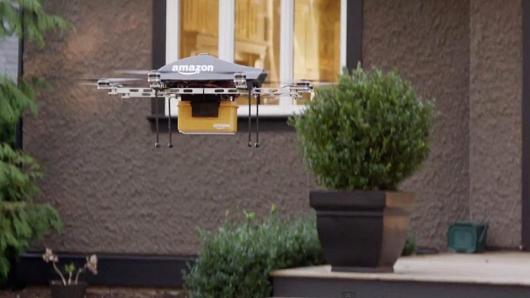
DroneLife: Drone delivery is taking longer than some people had expected. What do you attribute the delay to?

We also see challenges with how business value is communicated. For example, we’ve yet to see a credible ROI for drone delivery of consumer goods. What monetary benefit do drones provide vs. truck milk runs? There’s still some debate there – we’re not convinced it’s more economical to deliver burritos in an urban environment by drone than it is by bicycle or motor bike.
Given current regulations worldwide, what countries do you think are most likely to spearhead drone delivery? Why?
At the moment I would say the world leader is Ghana. They just announced a $12 million contract with Zipline for the design, installation and operation of drones for the delivery of medicines and other medical supplies to health facilities across the country. After that it could be any number of countries including Australia, China, Finland, U.A.E, Switzerland, Rwanda, the U.K. or the U.S. where we could see regular drone delivery for specialized purposes like emergency supplies in rural areas, but each one has its own set of hurdles when it comes to airspace integration regulations and public sentiment. I personally believe China will be first with regular limited delivery (or better said prescribed delivery) of consumer goods, but we’ll see.
There are a number of competing methods of delivery that are being explored. Can you speak to any of these?
There are basically two types of delivery– vertical landing with a package, and tethered decent of the package using a multirotor or fixed wing hybrid drone. Either method requires some repackaging and only products packaged near the destination would be candidates for drone delivery. The wide range of shapes and weights of objects means that uniformity of payload is a challenge. Getting to uniformity creates inventories and therefore raises operational costs.
Any more thoughts?
Once you have solved the packaging problem, you still have another. Delivery drones face many scenarios and obstacles (including shifting obstacles like trees, animals, and humans) after they arrive. You need some kind of predetermined location or object for that delivery to match your delivery method.
This requires a prescribed standard that customers adhere to. Delivery companies will probably face many local or community restrictions about those standards – that goes beyond the airspace or UTM integration required. Drone delivery requires a lot of very specific information about a particular location. That’s a problem that can be solved with a database, it’s not impossible. Still, the database would need to be dynamic and be updated constantly. That said I just think it’s not probable – at least in the near term.
Colin Snow and Skylogic Research provide market analysis for the entire commercial unmanned vehicle ecosystem.
Miriam McNabb is the Editor-in-Chief of DRONELIFE and CEO of JobForDrones, a professional drone services marketplace, and a fascinated observer of the emerging drone industry and the regulatory environment for drones. Miriam has penned over 3,000 articles focused on the commercial drone space and is an international speaker and recognized figure in the industry. Miriam has a degree from the University of Chicago and over 20 years of experience in high tech sales and marketing for new technologies.
For drone industry consulting or writing, Email Miriam.
TWITTER:@spaldingbarker
Subscribe to DroneLife here.
